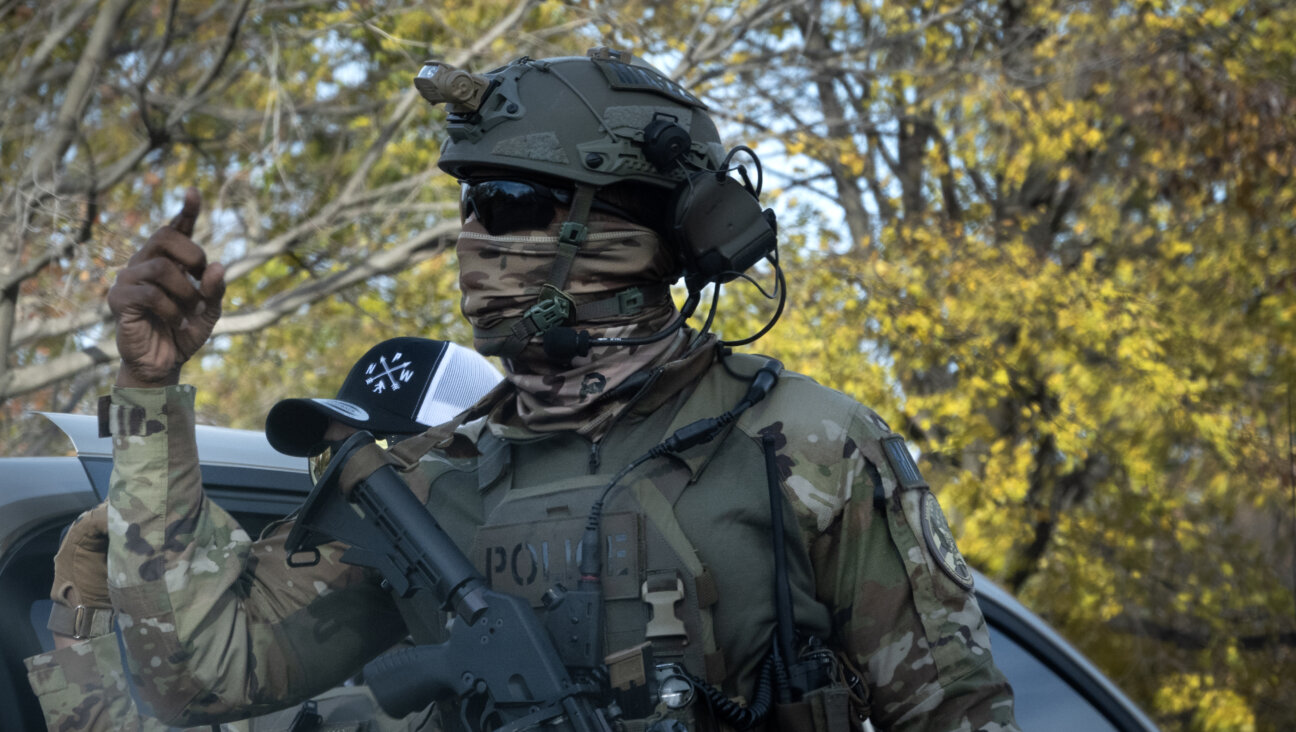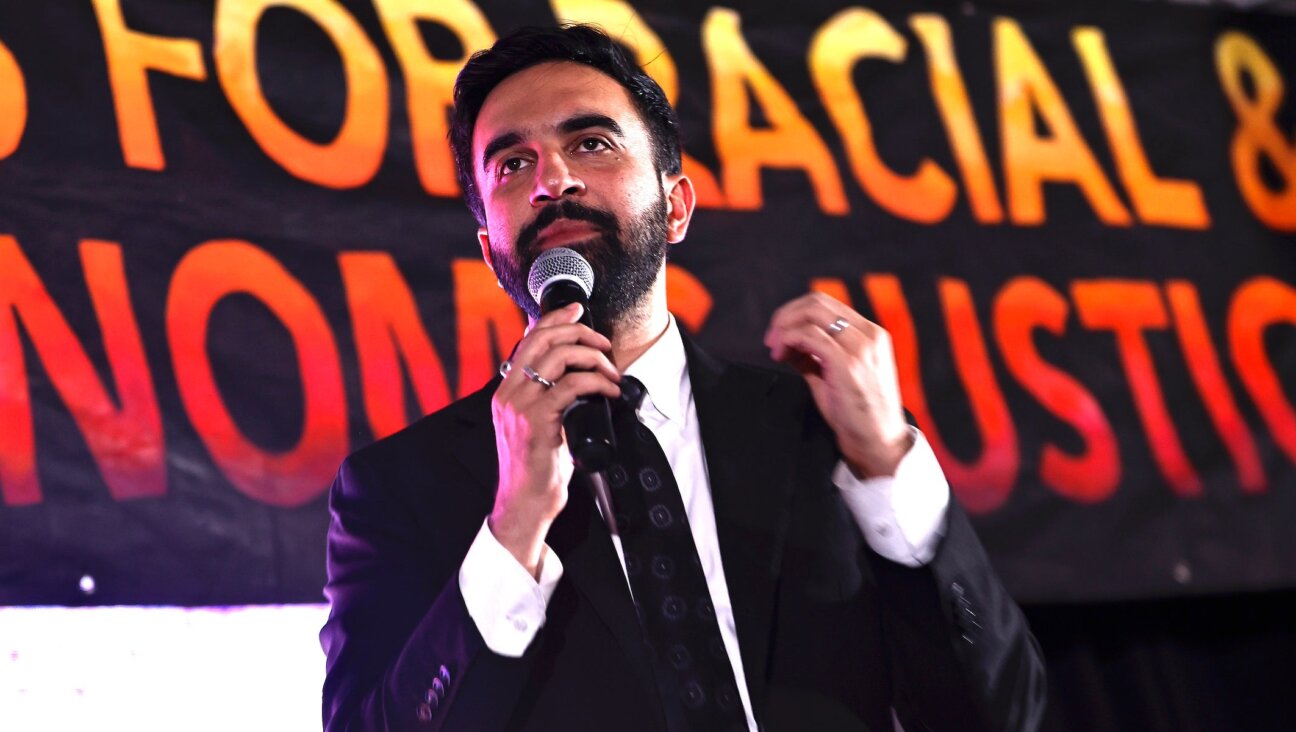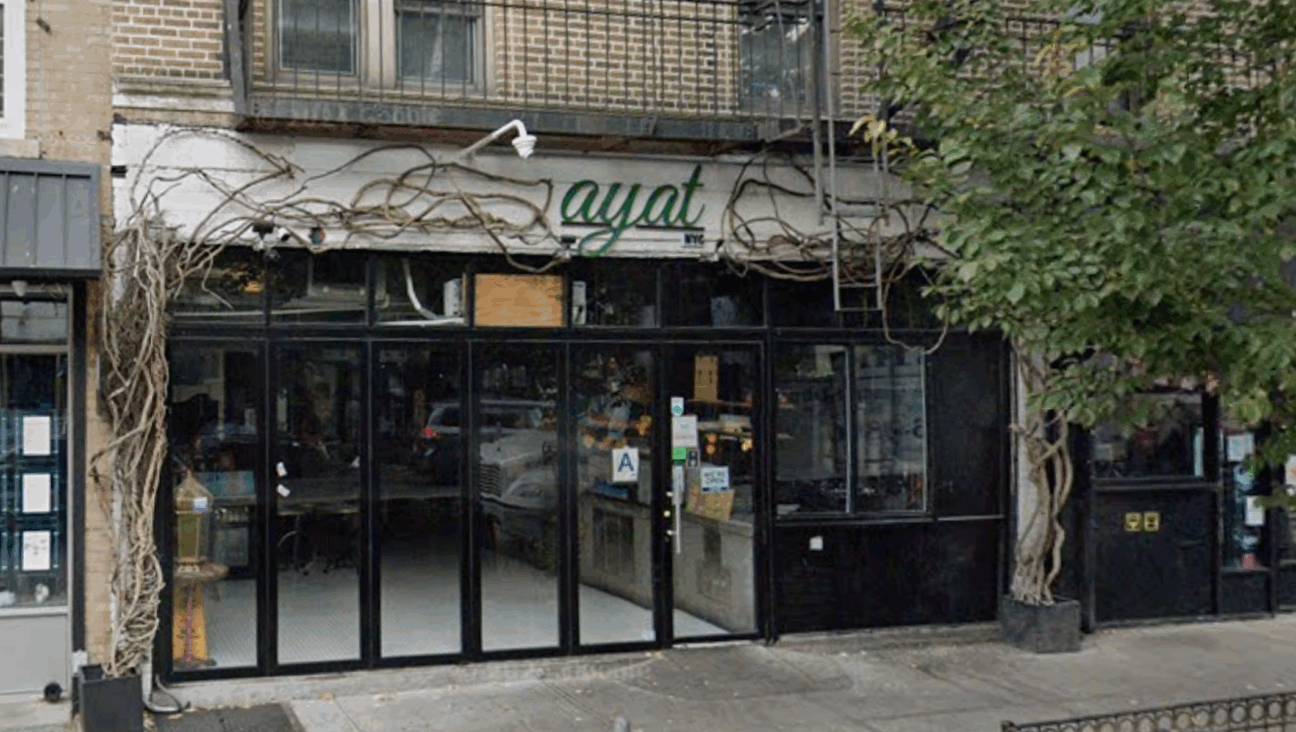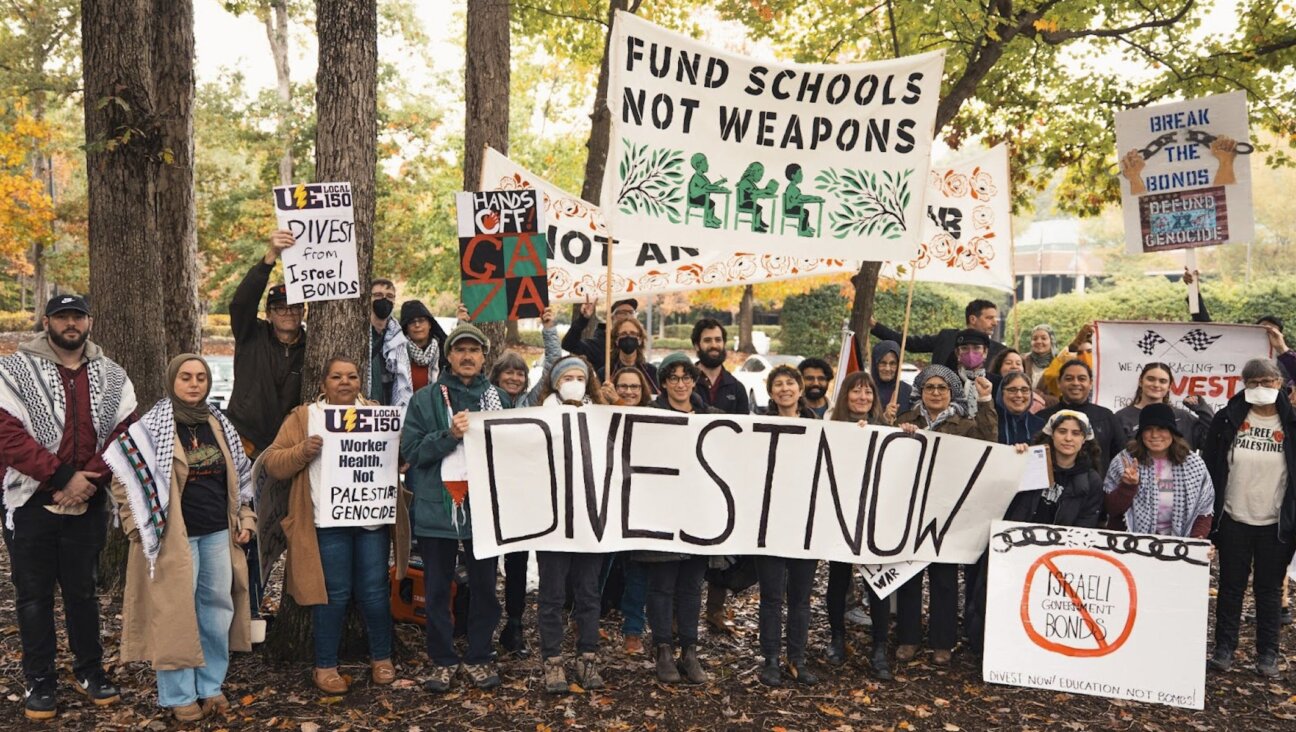Denial on the Temple Mount

Graphic by Angelie Zaslavsky
In recent weeks, Palestinian religious and political leaders have brought tensions over Jerusalem’s Temple Mount to a boil. During Sukkot, Jerusalem’s muezzins called on Palestinians to rally around the Al-Aqsa Mosque, reportedly warning that “Jews will try to break into it.” A little more than a week earlier, Palestinian worshipers at the site hurled rocks at French tourists, mistaking them for Jews attempting to pray on the Mount.
Palestinian charges that Israel is plotting against the mosques on the Mount are, of course, false. The irony is that Palestinian leaders have themselves been engaged in a very real effort — both rhetorical and physical — to undermine the Jewish history of the Mount.
This summer, the Palestinian Authority’s chief Islamic judge, Sheikh Tayseer Rajab Tamimi, told The Jerusalem Post that there was no evidence that a Jewish Temple had ever existed in Jerusalem. Nor is he the only Palestinian cleric who feels this way. Two years earlier, Jerusalem’s former mufti, Ikrema Sabri, had insisted that “there was never a Jewish temple on Al-Aqsa” and said of the Western Wall: “There is not a single stone with any relation at all to the history of the Hebrews.”
Much as Holocaust denial gained traction in Tehran, Temple denial has become a central tenet of Palestinian nationalism.
The denial of the existence of a First or Second Temple on the Mount, however, is a relatively new phenomenon. Indeed, early Muslim leaders eagerly acknowledged that the Temple Mount was the location of Solomon’s Temple.
It is said that in 638, the Islamic conqueror Caliph Umar Ibn al-Khattab had scarcely entered Jerusalem when he asked for the location of the Solomon’s Temple. Upon seeing the rubbish heap on the Temple Mount, he supposedly began clearing it with his own hands. The early Muslims referred to Jerusalem as the “City of the Temple.”
As late as 1925, the Supreme Moslem Council in Jerusalem proudly included an unequivocal reference to the Temple in its official guidebook to the Haram al-Sharif, the Noble Sanctuary, which is the name used by Muslims for the Temple Mount. “Its identity with the site of Solomon’s Temple is beyond dispute,” the guide asserts.
The modern process of politicization of the Temple Mount began with Grand Mufti Haj al-Amin Husayni, who served as president of the Supreme Moslem Council in the 1920s and 1930s. Seeking to mobilize Arab opposition to the influx of Jewish immigrants, Husayni used the Temple Mount as a rallying point. He accused the Jews of trying to destroy the Al-Aqsa Mosque, a kind of Arab blood libel that remains popular today.
For the Mufti, the Mount was foremost an earthly political battleground, not the transcendent, sacred place it was for Caliph Umar 13 centuries before. At one point, the Mufti deliberately heightened tensions by suggesting the stones of the Western Wall be dismantled and used to pave a highway.
After 1967, we see evidence of Islamic rhetoric undergoing its final evolution toward the outright denial of the Temples’ historic presence on the Mount. In 1973, Saudi Arabia’s King Faisal announced on Radio Riyadh, “The Jews have no connection whatsoever with Jerusalem and have no sacraments there…. The Temple of Solomon does not exist in Jerusalem…. Therefore the Jews have no connection or right to have any presence in Jerusalem.”
But it was Yasser Arafat who elevated Temple denial to the level of statecraft. During the 2000 Camp David Summit, Arafat stubbornly insisted that the Temple had not been located in Jerusalem.
The campaign to erase the Mount’s Jewish history, however, goes beyond mere rhetoric and has included actual destruction of Jewish antiquities. In recent years, the Waqf, the land trust that administers the Islamic holy sites on the Temple Mount, has used bulldozers to excavate vast underground mosques beneath the Mount’s surface, systematically removing thousands of tons of archaeologically rich soil, and dumping them in the adjacent Kidron Valley.
All too often, the international community has treated this aggressive physical revisionism on the Temple Mount as little more than a dispute over ancient history. But Palestinian efforts to erase the Jewish connection to the Temple Mount have great contemporary significance. They are the centerpiece of a decades-long campaign to deny historic Jewish ties to the Land of Israel and thus call into question the State of Israel’s legitimacy.
Before the United Nations General Assembly last month, Prime Minister Benjamin Netanyahu responded to Mahmoud Ahmadinejad’s Holocaust revisionism by holding up a copy of a Nazi document that outlined the planned extermination of the Jewish race. But he also took aim at the variety of revisionism that denies ancient Jewish history. Quoting the inscription across the street from the very building in which he spoke — “Nation shall not lift up sword against nation” — Netanyahu reminded the assembled delegates that those words were spoken by the prophet Isaiah in the Land of Israel some 2,800 years ago.
“We are not strangers to this land,” Netanyahu said. “This is our homeland.”
Without recognition of that historic fact, how can there be peace between Palestinians and Israelis? Palestinians need to get beyond the decades of denial and stop trying to snuff out the fire of history. They should embrace, once again, their own religious traditions, which for centuries not only acknowledged, but also honored, the last ember of the Temple Mount’s sacred past.
Daniel Levin is the author of the novel “The Last Ember” (Riverhead).















